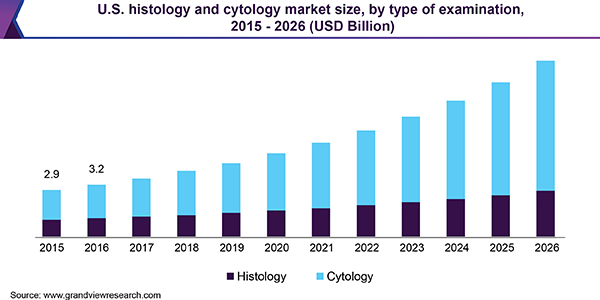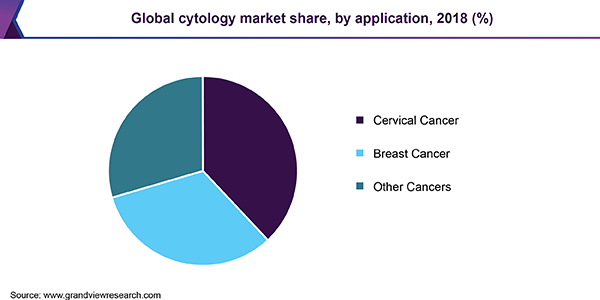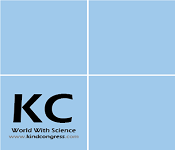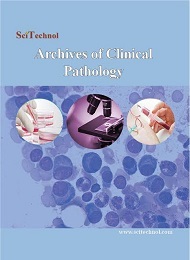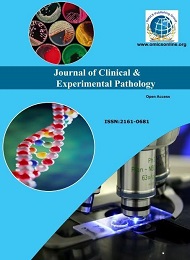Pathology is the study of causes and effects of diseases or injury. The word
pathology also refers to the study of disease in general, incorporating a wide range of
bioscience research fields and medical practices. Pathology is a significant field in modern medical diagnosis and medical research. “Pathology" may also refer to the predicted or actual progression of particular diseases and the affix path is sometimes used to indicate a state of disease in cases of both physical ailment and psychological conditions. A physician practicing pathology is called a
pathologist. The study of
pathology, including the detailed examination of the body, including dissection and inquiry into specific maladies, dates back to antiquity.
With the new understanding of causative agents, physicians began to compare the characteristics of one germ’s symptoms as they developed within an affected individual to another germ’s characteristics and symptoms.
Related conferences:
18th Asia Pacific Pathology Congress: November 25-26, 2020 Tokyo, Japan, World Congress on Histopathology: November 18-19, 2019 Berlin, Germany, 14th International Conference on Pathology and Laboratory Medicine: March 02-03, 2020 London, UK,2nd World Congress on Pathology: October 28-29, 2020 Zurich, Switzerland, Global Congress on Pathology & Laboratory Medicine: September 14-15, 2020, Vancouver, Canada, 9th World Congress on Public Health, Epidemiology and Nutrition: April 08-09, 2020 Sydney, Australia.
Histopathology refers to the microscopic examination of tissues and cells. It is likely performed by examining cells and tissues under a light microscope or electron microscope, which has been sectioned, stained on a microscope slide, since accurate diagnosis of cancer and other diseases usually requires histopathological examination of samples.
Histopathological examination of tissues starts with surgery, biopsy, or autopsy. The tissue is removed from the body of an organism and then placed in a fixative that stabilizes the tissues to prevent decay. The most common fixative is formalin, although frozen section of fixing is also common.
Histochemistry refers to the science of using chemical reactions between laboratory chemicals and components within tissue.
Related conferences:
18th Asia Pacific Pathology Congress: November 25-26, 2020 Tokyo, Japan, World Congress on Histopathology: November 18-19, 2019 Berlin, Germany, 14th International Conference on Pathology and Laboratory Medicine: March 02-03, 2020 London, UK,2nd World Congress on Pathology: October 28-29, 2020 Zurich, Switzerland, Global Congress on Pathology & Laboratory Medicine: September 14-15, 2020, Vancouver, Canada, 9th World Congress on Public Health, Epidemiology and Nutrition: April 08-09, 2020 Sydney, Australia.
Cytopathology is the branch of
pathology that studies and diagnoses diseases on the cellular level. It is generally used on samples of free cells or tissue fragments, in contrast to histopathology; Cytopathology is best used as one of three tools, the second and third being the physical examination and medical imaging.
Cytopathology is commonly used to investigate diseases involving a wide range of body sites, often to aid in the diagnosis of cancer but also in the diagnosis of some infectious diseases and other inflammatory conditions. Cytopathology is a diagnostic technique that examines cells from various body sites to determine the cause or the nature of disease.
Cytopathology tests are sometimes called smear tests because the samples may be smeared across a glass microscope slide for subsequent staining and microscopic examination.
Related conferences:
18th Asia Pacific Pathology Congress: November 25-26, 2020 Tokyo, Japan, World Congress on Histopathology: November 18-19, 2019 Berlin, Germany, 14th International Conference on Pathology and Laboratory Medicine: March 02-03, 2020 London, UK,2nd World Congress on Pathology: October 28-29, 2020 Zurich, Switzerland, Global Congress on Pathology & Laboratory Medicine: September 14-15, 2020, Vancouver, Canada, 9th World Congress on Public Health, Epidemiology and Nutrition: April 08-09, 2020 Sydney, Australia.
Anatomical pathology is a medical specialty that is concerned with the diagnosis of disease based on the macroscopic, microscopic,
biochemical, immunological and molecular examination of organs, tissues, and whole bodies. Anatomical pathology is itself divided into subfields, the main divisions being surgical pathology, cytopathology, and
forensic pathology. Anatomical pathology is one of two branches of pathology, the other being clinical pathology, the diagnosis of disease through the laboratory analysis of bodily fluids and tissues. Sometimes, pathologists practice both anatomical and clinical pathology, a combination known as general pathology.
Pathologists practice both anatomical and clinical pathology, a combination known as general pathology similar specialties exist in veterinary pathology. Anatomic pathology relates to the processing, examination, and diagnosis of surgical specimens by a physician trained in
pathological diagnosis.
Related conferences:
18th Asia Pacific Pathology Congress: November 25-26, 2020 Tokyo, Japan, World Congress on Histopathology: November 18-19, 2019 Berlin, Germany, 14th International Conference on Pathology and Laboratory Medicine: March 02-03, 2020 London, UK,2nd World Congress on Pathology: October 28-29, 2020 Zurich, Switzerland, Global Congress on Pathology & Laboratory Medicine: September 14-15, 2020, Vancouver, Canada, 9th World Congress on Public Health, Epidemiology and Nutrition: April 08-09, 2020 Sydney, Australia.
Immunopathology is a branch of science that deals with immune responses associated with diseases and includes the study of the
pathology of an organism, organ system, or disease with respect to the immune system and immune responses. When a foreign antigen enters the body, there is either an antigen specific or nonspecific response to it. These responses are due to the immune system fighting against the foreign antigens, whether they are harmful or not. There are certain problems in the immune system that can lead to more serious illness or disease. These diseases can come from one of the following problems.
• The one would be Hypersensitivity reactions, where the immune response will be stronger than normal.
• The second kind of complication is Autoimmunity, where the immune system would attack itself rather than the antigen.
• Best example for autoimmunity is inflammation where the immune cells are self-reactive.
-
Diagnostic immunology
-
Hematopathology
-
Transfusion medicine
-
Immuno assay
-
Kinetics of antigen-antibody
Related conferences:
18th Asia Pacific Pathology Congress: November 25-26, 2020 Tokyo, Japan, World Congress on Histopathology: November 18-19, 2019 Berlin, Germany, 14th International Conference on Pathology and Laboratory Medicine: March 02-03, 2020 London, UK,2nd World Congress on Pathology: October 28-29, 2020 Zurich, Switzerland, Global Congress on Pathology & Laboratory Medicine: September 14-15, 2020, Vancouver, Canada, 9th World Congress on Public Health, Epidemiology and Nutrition: April 08-09, 2020 Sydney, Australia.
Hematopathology is the study of diseases and disorders affecting blood cells, their production, and any organs and tissues involved in haematopoiesis (including constituents such as white blood cells, red blood cells, and platelets) and the tissues, and organs comprising the
hematopoietic system. The hematopoietic system states to tissues and organs that produce and/or primarily host hematopoietic cells and includes bone marrow, the lymph nodes, thymus, spleen, and other lymphoid tissues. The
hematopathologist reviews biopsies of lymph nodes, bone marrows and other tissues involved by an infiltrate of cells of the hematopoietic system.
-
Immunohisto chemistry
-
Lymphoma
-
Therapy related neoplasms in hematopathology
-
Cutaneous B-cell and T-cell lymphoma
Related conferences:
18th Asia Pacific Pathology Congress: November 25-26, 2020 Tokyo, Japan, World Congress on Histopathology: November 18-19, 2019 Berlin, Germany, 14th International Conference on Pathology and Laboratory Medicine: March 02-03, 2020 London, UK,2nd World Congress on Pathology: October 28-29, 2020 Zurich, Switzerland, Global Congress on Pathology & Laboratory Medicine: September 14-15, 2020, Vancouver, Canada, 9th World Congress on Public Health, Epidemiology and Nutrition: April 08-09, 2020 Sydney, Australia.
Immunohistochemistry takes its name from the roots "immuno", in reference to the antibodies used in the procedure, and"histo", meaning tissue. Albert Coons first conceptualized and implemented the procedure in 1941. The most common application of immunostaining is involving the process of selectively identifying the antigens in cells of a tissue section by exploiting the principle of antibodies binding specifically to antigens in biological tissues.
Immunohistochemical staining is most widely used in the diagnosis of abnormal cells of the cancerous tumors. In immunohistochemical techniques, there are several steps prior to the final staining of the tissue antigen, which can cause a variety of problems including strong background staining, weak target antigen staining, and autofluorescence. IHC is an excellent detection technique and has tremendous advantage of being able to show exactly where a given protein is located within the tissue examined. In most human cancer forms Immunohistochemistry is also used for protein profiling. While the term immunohistochemistry is often used interchangeably with
immunocytochemistry, slight differences exist between IHC and ICC in the nature of the biological sample which is to be analysed.
Each sample is treated differently, yet all the methods are interchangeable. There is no one way to prepare such types of cell samples for immunocytochemical analysis.
Many
clinical laboratories in tertiary hospitals will have menus of over 200 antibodies used as diagnostic, prognostic and predictive biomarkers.
Related conferences:
18th Asia Pacific Pathology Congress: November 25-26, 2020 Tokyo, Japan, World Congress on Histopathology: November 18-19, 2019 Berlin, Germany, 14th International Conference on Pathology and Laboratory Medicine: March 02-03, 2020 London, UK,2nd World Congress on Pathology: October 28-29, 2020 Zurich, Switzerland, Global Congress on Pathology & Laboratory Medicine: September 14-15, 2020, Vancouver, Canada, 9th World Congress on Public Health, Epidemiology and Nutrition: April 08-09, 2020 Sydney, Australia.
Medical microbiology is a branch of medicine dealing with the prevention, diagnosis and treatment of infectious as well as non-infectious diseases. Medical microbiologists deal with clinical consultations on the investigation, principles of diagnosis, treatment, and prevention of infectious diseases; the scientific development, administrative and medical direction of a clinical microbiology laboratory; the establishment and direction of infection control programs across the continuum of care; communicable disease prevention and epidemiology and related public health issues.
-
Advancements in pharmaceutical microbiology
-
Applied and environmental microbiology
-
Microbial metabolism and genetics
-
Food microbiology and safety
-
Haematological malignancies
-
Nano patches and Nano vaccination
Related conferences:
18th Asia Pacific Pathology Congress: November 25-26, 2020 Tokyo, Japan, World Congress on Histopathology: November 18-19, 2019 Berlin, Germany, 14th International Conference on Pathology and Laboratory Medicine: March 02-03, 2020 London, UK,2nd World Congress on Pathology: October 28-29, 2020 Zurich, Switzerland, Global Congress on Pathology & Laboratory Medicine: September 14-15, 2020, Vancouver, Canada, 9th World Congress on Public Health, Epidemiology and Nutrition: April 08-09, 2020 Sydney, Australia.
Dermatopathology is together subspecialty of two different branches of science i.e. is dermatology and pathology. This focuses on the study of cutaneous diseases at a microscopic and molecular level.
Dermatologists are able to recognize most of the skin diseases based on their appearances, anatomic distributions, and behaviour. One of the greatest challenges of
dermatopathology is its scope More than 1500 different types of disorders of the skin exist, including cutaneous eruptions and
neoplasms.
Dermatopathologists must maintain a broad base of knowledge in clinical dermatology, and be familiar with several other specialty areas in Medicine. Some biopsies are interpreted by the dermatologists who obtained them; some are sent to pathology laboratories and interpreted either by general
pathologists or dermatopathologists, while others are interpreted at specialized dermatopathology laboratories. Most dermatologic pharmacology can be categorized based on the
Anatomical Therapeutic Chemical Classification System.
-
Dermatopathology diagnosis
-
Dermatopathology in forensic autopsy
-
Skin Histopathology
-
Neoplastic & inflammatory diseases
-
Advanced molecular testing
Related conferences:
18th Asia Pacific Pathology Congress: November 25-26, 2020 Tokyo, Japan, World Congress on Histopathology: November 18-19, 2019 Berlin, Germany, 14th International Conference on Pathology and Laboratory Medicine: March 02-03, 2020 London, UK,2nd World Congress on Pathology: October 28-29, 2020 Zurich, Switzerland, Global Congress on Pathology & Laboratory Medicine: September 14-15, 2020, Vancouver, Canada, 9th World Congress on Public Health, Epidemiology and Nutrition: April 08-09, 2020 Sydney, Australia.
Forensic pathology focuses on determining the cause of death by post-mortem examination of a corpse or partial remains. An
autopsy is commonly performed by a medical examiner, generally during criminal investigations. Where medical examiners are frequently asked to confirm the identity of a dead body. Where the deaths are of unknown cause and those considered unnatural are investigated in this
forensic pathology. The methods forensic scientists use to determine death of the individual include examination of tissue specimens to identify the presence or absence of natural disease and other microscopic findings, interpretations of
toxicology on body tissues and fluids to determine the chemical cause of overdoses, poisonings or other cases involving toxic agents, and examinations of the injury.
The cause of death, and the circumstances surrounding the cause of death, in which most of the jurisdictions, include homicide, suicide, natural and accidental. The autopsy also provides an opportunity for other issues raised by the death to be identified.
Related conferences:
18th Asia Pacific Pathology Congress: November 25-26, 2020 Tokyo, Japan, World Congress on Histopathology: November 18-19, 2019 Berlin, Germany, 14th International Conference on Pathology and Laboratory Medicine: March 02-03, 2020 London, UK,2nd World Congress on Pathology: October 28-29, 2020 Zurich, Switzerland, Global Congress on Pathology & Laboratory Medicine: September 14-15, 2020, Vancouver, Canada, 9th World Congress on Public Health, Epidemiology and Nutrition: April 08-09, 2020 Sydney, Australia.
Oral and maxillofacial pathology focuses on the diagnosis, clinical management and investigation of diseases that affect the oral cavity and surrounding maxillofacial structures. Including epithelial tissues, salivary gland, bone and soft tissue pathologies. It also intersects with the field of
dental pathology. It also refers to the diseases of the mouth, jaw and orofacial skin related structures such as salivary glands, temporomandibular joints, facial muscles and perioral skin.
Oral and Maxillofacial Pathology is one of nine dental specialties recognized by the American Dental Association, General pathology methods are of great importance to biomedical research into disease, wherein they are sometimes referred to as "experimental" or "
investigative" pathology. Medical imaging is also central in supplying the biometric data necessary to establish baseline features of anatomy and physiology. It is sometimes considered to be a specialty of
dentistry and
pathology.
Related conferences:
18th Asia Pacific Pathology Congress: November 25-26, 2020 Tokyo, Japan, World Congress on Histopathology: November 18-19, 2019 Berlin, Germany, 14th International Conference on Pathology and Laboratory Medicine: March 02-03, 2020 London, UK,2nd World Congress on Pathology: October 28-29, 2020 Zurich, Switzerland, Global Congress on Pathology & Laboratory Medicine: September 14-15, 2020, Vancouver, Canada, 9th World Congress on Public Health, Epidemiology and Nutrition: April 08-09, 2020 Sydney, Australia.
Clinical pathology,
laboratory medicine,
clinical/medical biology, clinical analysis are the medical specialty which is concerned with the diagnosis of disease based on the laboratory analysis of bodily fluids, such as blood, urine, and tissue homogenates.
Clinical pathologists are often medical doctors in some countries. Clinical pathologists work in close collaboration with medical technologists, hospital administrations, and referring physicians. Overlap between anatomic and
clinical pathology is expanding to molecular diagnostics and proteomics as we move towards making the best use of new technologies for personalized medicine. Clinical pathologists learn to administer a number of visual and microscopic tests and an especially large variety of tests of the biophysical properties of tissue samples involving automated analysers and cultures. Sometimes the general term "laboratory medicine specialist" is used to refer to those working in clinical pathology, including medical doctors, Ph.D. and doctors of
pharmacology.
Related conferences:
18th Asia Pacific Pathology Congress: November 25-26, 2020 Tokyo, Japan, World Congress on Histopathology: November 18-19, 2019 Berlin, Germany, 14th International Conference on Pathology and Laboratory Medicine: March 02-03, 2020 London, UK,2nd World Congress on Pathology: October 28-29, 2020 Zurich, Switzerland, Global Congress on Pathology & Laboratory Medicine: September 14-15, 2020, Vancouver, Canada, 9th World Congress on Public Health, Epidemiology and Nutrition: April 08-09, 2020 Sydney, Australia.
It is often applied in a context that is as much scientific as directly medical and encompasses the development of molecular and genetic approaches to the diagnosis and classification of human diseases, the design and validation of predictive biomarkers for treatment response and disease progression, and the susceptibility of individuals of different genetic constitution to particular disorders. Techniques used are based on analysing samples of DNA and RNA.
Molecular pathology is widely used for gene therapy and disease diagnosis. Pathology and epidemiology share the same goal of elucidating etiology of disease, and
molecular pathological epidemiology aims to achieve the goal at molecular, individual and population levels. Each patient has a unique disease process, by considering the uniqueness of the exposome and its unique influence on molecular pathologic process. By this concept it has been adopted in clinical medicine along with
precision medicine and
personalized medicine.
Related conferences:
18th Asia Pacific Pathology Congress: November 25-26, 2020 Tokyo, Japan, World Congress on Histopathology: November 18-19, 2019 Berlin, Germany, 14th International Conference on Pathology and Laboratory Medicine: March 02-03, 2020 London, UK,2nd World Congress on Pathology: October 28-29, 2020 Zurich, Switzerland, Global Congress on Pathology & Laboratory Medicine: September 14-15, 2020, Vancouver, Canada, 9th World Congress on Public Health, Epidemiology and Nutrition: April 08-09, 2020 Sydney, Australia.
A
cytopathology case report tells us about whether the cells or tissues studied under a microscope contain the signs of disease or not.
Cytopathology is generally used on samples of free cells or tissue fragments and cytopathology tests are sometimes called smear tests because the samples may be smeared across a glass microscope slide for subsequent staining and microscopic examination.
Gynaecology case reports may be included for the recommendations of Laboratories.
Cytopathology is commonly used to investigate diseases involving a wide range of body sites, often to aid in the diagnosis of cancer but also in the diagnosis of some infectious diseases and other inflammatory conditions. Cytopathology is frequently called as "
cytology", which means "the study of cells".
Related conferences:
18th Asia Pacific Pathology Congress: November 25-26, 2020 Tokyo, Japan, World Congress on Histopathology: November 18-19, 2019 Berlin, Germany, 14th International Conference on Pathology and Laboratory Medicine: March 02-03, 2020 London, UK,2nd World Congress on Pathology: October 28-29, 2020 Zurich, Switzerland, Global Congress on Pathology & Laboratory Medicine: September 14-15, 2020, Vancouver, Canada, 9th World Congress on Public Health, Epidemiology and Nutrition: April 08-09, 2020 Sydney, Australia.
Cancer Cytopathology studies the whole tissue in contrast to histopathology and is generally used on samples of free cells or tissue fragments.
Cytopathology is usually aid to the diagnosis of cancer and also helps in the diagnosis of certain infectious diseases and other inflammatory conditions. Cytopathology tests are sometimes called smear tests because the samples may be smeared across a glass microscope.
Cytopathology techniques are used in the examination of virtually all body organs and tissues:
-
Grading and Staging of cancer
-
Pathophysiology
-
Epigenomics and Cancer Risk Factors
-
Cell Biology and Tumor Biology
-
Stem Cells and Cancer of Cancer
-
Tumor Immunology
-
Molecular pathology
-
Imaging and Radio oncology
-
Role of pathology in cancer diagnostics
Related conferences:
18th Asia Pacific Pathology Congress: November 25-26, 2020 Tokyo, Japan, World Congress on Histopathology: November 18-19, 2019 Berlin, Germany, 14th International Conference on Pathology and Laboratory Medicine: March 02-03, 2020 London, UK,2nd World Congress on Pathology: October 28-29, 2020 Zurich, Switzerland, Global Congress on Pathology & Laboratory Medicine: September 14-15, 2020, Vancouver, Canada, 9th World Congress on Public Health, Epidemiology and Nutrition: April 08-09, 2020 Sydney, Australia.
Neuropathology is the study of disease of nervous system tissue, usually in the form small
surgical biopsies or sometimes whole body in the case of
autopsy. Neuropathology also relates to forensic pathology because brain disease or brain injury can be related to cause of death. Neuropathology should not be confused with
neuropathy, which refers to disorders of the nerves. A person, who specializes in neuropathology, by completing a fellowship after a residency in anatomical or general pathology, is called a neuropathologist. Neuropathology is a subspecialty of anatomic pathology, neurology, and neurosurgery. In many English-speaking countries, neuropathology is considered a subfield of
anatomical pathology.
Biopsies can also consist of the skin. Epidermal nerve fiber density testing (ENFD) is a more recently developed neuropathology test in which a punch skin is taken for biopsy to identify small fiber neuropathies by analyzing the nerve fibers of the skin and it is going to available in selective labs as well as many universities. It is also used to identify painful small fiber
neuropathies.
Related conferences:
18th Asia Pacific Pathology Congress: November 25-26, 2020 Tokyo, Japan, World Congress on Histopathology: November 18-19, 2019 Berlin, Germany, 14th International Conference on Pathology and Laboratory Medicine: March 02-03, 2020 London, UK,2nd World Congress on Pathology: October 28-29, 2020 Zurich, Switzerland, Global Congress on Pathology & Laboratory Medicine: September 14-15, 2020, Vancouver, Canada, 9th World Congress on Public Health, Epidemiology and Nutrition: April 08-09, 2020 Sydney, Australia.
Histology is also known as
microanatomy. It is the branch of biology which deals with the microscopic anatomy of
biological tissues. In medicine, histopathology is the branch of histology which includes the microscopic identification of the diseased tissue. It is an important part of anatomical pathology and surgical pathology.Histopathological examination of tissue requires an accurate diagnosis of cancer and other diseases. The field of histology that includes the preparation of tissues for microscopic examination is known as
histotechnology.
Antibodies have been used to specifically visualize proteins, carbohydrates, and lipids. This process is called
immunohistochemistry. When the stain is used to target a specific chemical component of the tissue, the term histochemistry is used.
There are separate fields in terms of medical practice, a number of areas of inquiry in medicine and medical science overlap greatly with general pathology, work in tandem with it, or contribute significantly to the understanding of the
pathology of a given disease or its course in an individual. As a significant portion of all general pathology practice is concerned with cancer, the practice of oncology is deeply tied to, and dependent upon, the work of both anatomical and
clinical pathologists. Biopsy, resection and blood tests are all examples of pathology work that is essential for the diagnosis of many kinds of cancer and for the staging of cancerous masses.
-
Clinical and Pathological Aspects
-
Staining of processed histology slides
-
Immunohistochemistry
-
Anatomical and Physiological Disorders of Nose and Ear
Related conferences:
18th Asia Pacific Pathology Congress: November 25-26, 2020 Tokyo, Japan, World Congress on Histopathology: November 18-19, 2019 Berlin, Germany, 14th International Conference on Pathology and Laboratory Medicine: March 02-03, 2020 London, UK,2nd World Congress on Pathology: October 28-29, 2020 Zurich, Switzerland, Global Congress on Pathology & Laboratory Medicine: September 14-15, 2020, Vancouver, Canada, 9th World Congress on Public Health, Epidemiology and Nutrition: April 08-09, 2020 Sydney, Australia.
Market analysis
High prevalence of cancer and continuous research and development are expected to be the key factors driving the growth. The world histology and cytology market size was valued at USD11.0 billion in 2018 and is estimated to expand at a CAGR of around 13.7% over the forecast period. Technological advancements and investments in innovation are projected to further fuel the expansion.
According to the World Health Organisation (WHO), cancer was the second leading cause of death across the globe and was responsible for 8.8 million deaths in 2015.Hence, the high incidence of cancer due to changing lifestyle and change in environment are likely to drive the market during the forecast period.
Furthermore, growing awareness about the screening of cancer and technological advancements in the cell and tissue studies are likely to boost the demand in near future. The requirement of companion diagnostic for targeted drugs is likely to drive the demand for cytology and histology products in the forthcoming years.
Continuous R&D efforts by major players widen the scope of application for diagnosis of various diseases. This factor is likely to drive the market.Presently,the test are majorly used for the screening of cervical and breast cancer.However,adoption of these tests for the screening of bladder and lung cancer is growing at rapid rate.
Histology and cytology market share analysis
The global market is highly competitive in nature. Development of sensitive and specific products and targeted commercialization activities by merges or collaborations are the key parameters to remain competitive and to gain greater market share. For instance, in April 2017 Roche CINtec Histology test received the Food and Drug Administration (FDA) approval and is expected to improve consistency in the diagnosis of cervical-pre cancers.
This report forecast revenue growth at global, regional, and country levels and provides an analysis of the latest industry trends in each of the sub-segments from 2015-2026.For the purpose of this study, Grand View Research has segmented the global histology and cytology market analysis based on type of examination and region.
Type of Examination Outlook (Revenue, USD Million, 2015 - 2026)
• Cytology
o Cervical Cancer
o Breast Cancer
o Other Cancers
• Histology
Type of Examination Insights
Based on the type of examination, the market has been segmented in to cytology and histology. Cytology is further segmented by application in to cervical, breast and other cancers. In 2018 segment held the highest market share, attributed to higher demand on cell screening. Advantages such as low cost, high specificity, adequate sensitivity bode well for segment growth.
Cervix and breast screening are the major applications of cytology. Cervical cancer accounted for the largest market share in 2018 and is expected to maintain its dominance during forecast period. This can be attributed to large patient pool and availability of products for the cervical cancer screening.
Other cancers majorly include cancer of urinary bladder, lungs, head and neck, colorectal and ovary. Furthermore the scope of application is continuously on the raise due to on-going research in the field.Investiments by major players for the development and commercialisation of tests is likely to drive the other cancer screening segment over the forecast period.
